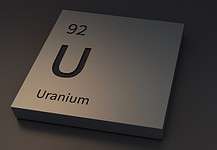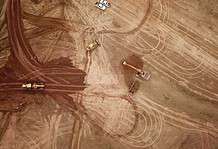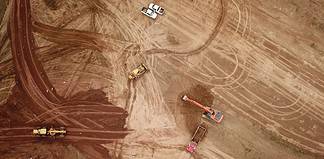RENEWABLE energy is an essential end goal for any responsible corporate citizen but until recently alternate energy systems have struggled to fully replace grid or diesel/LNG generated electricity.
The SolarGEM system from Sequentia Services, in Queensland, provides a proven and reliable solution for remote power generation, delivering flexible and relocatable renewable energy from a hybrid power station.
Containment policy
The foundation of the SolarGEM system is the container-mounted integrated photovoltaic (PV) system, which includes an inverter, an AC distribution board, communications and fire protection.
A total of 200 PV panels, mounted on 40 hinged frames, concertina into a single 20-foot container.
When the side doors of the container are opened a pair of tracks are withdrawn and set up on a foundation system designed to cater for the site’s contours.
The frames are then deployed with the aid of a telehandler or similar machine.
Once fully extended, the row of solar panels is 90m long. Each container has the capability to produce 74kWp (60kVA) of power and an almost unlimited number of containers can be daisy-chained to produce any desired total output level.
Using a string inverter, each container is capable of outputting 60kW of AC power in either three-phase or single-phase.
At 400V, the inverter has a constant current delivery of 86.7A up to a maximum of 95.3A.
A recent project study for a mining client proved this scalability by linking 136 individual units at a single location to produce 10MW of power.
Once the panels are extended and the tracks are secured to the foundations, the side doors of each container can be closed and locked to safely enclose key electrical elements and to prevent weather ingress or unwanted entry. An E-Stop is fitted to the outside of each container as an integral safety feature.
In addition to the SolarGEM’s ability to link dozens of units together, the system has excellent ground density, with only 1m required between each row of panels.
This creates a smaller footprint and economies with cabling and wiring setup time.
Because the SolarGEMs are portable, they can also be set up in satellite locations on a mine site. This is ideal for powering the pumps at a tailings dam for example, as it eliminates the need for remote diesel deliveries.
Exploration companies also find this portability invaluable as they are able to set up in a particular location and then move to the next with a minimum of downtime, all while reducing diesel generator use and associated maintenance hassles.
Battery technology
Along with the SolarGEM providing 74kW in one 20-ft container, Sequentia Services couple their scalable PV array with a battery system, which is also containerised.
Output ranges from about 100kWh to 1MWh in each container. Similar to the SolarGEM, the StorageGEM is scalable to allow an almost unlimited number of units to be combined to meet a specific requirement.
The battery system’s design is flexible to accommodate varying site load profiles, be it for energy shifting, power control or a mix of both.
Being lithium-ion, providing grid stability services for a grid-connected or micro-grid setup is not an issue.
With blackstart capabilities, the reliability of the site’s electrical system is secured, even catering for the massive increases in load when heavy processing equipment commences operation.
What sets this system apart is the way it smoothly integrates solar power with battery storage and diesel supplementation, using smart management software that optimises the balance of all three inputs to minimise power costs while delivering an uninterrupted power supply.
Control is key
Hybrid power is now feasible with near 100pc renewable energy penetration, maintained by as little as 5pc diesel power to periodically charge and maintain the storage batteries.
For each hybrid system, a cost benefit analysis is carried out to provide the most optimum mix of technologies more commonly used in mining.
This typically results in a 50-70pc renewable energy penetration with diesel generation providing support at 100pc efficiency.
The seamless switching and transition between each power source is managed and controlled by Akuo Industries’ highly advanced control software.
This French company has been in the renewables industry for more than 10 years and has developed their own energy management system (EMS) to manage the changing power requirements of their clients’ operations at various times throughout the day and night.
The end result of their exhaustive R&D program is smooth, reliable power.
An added advantage of such powerful management hardware and software is the ability to effectively test a complete system ‘on the test bench’ offsite, before it is deployed to a remote location. Technical staff, including the client’s technical representatives, can put the installation through its paces before shipping.
This allows adjustments to be made under factory conditions so that when the EMS hardware and software are installed on site, final commissioning time is drastically reduced and a major project risk is significantly mitigated.
Full redundancy
Depending on the solar PV and battery sizing, the EMS is able to cycle the diesel power to act only as an emergency back-up or once or twice a week to maintain the storage batteries.
Additionally, Sequentia designs their systems with full N+1 redundancy, so that if the site requires 5MW to operate then there are enough diesel generators to meet that 5MW demand for a period of time, if necessary.
So, the Sequentia hybrid systems effectively offer more power reliability while providing operational cost savings.
Grid locked
Utilising the battery system and the EMS, Sequentia can configure a fully operational power station ‘behind the meter’ and only use grid power to periodically charge the batteries at off-peak times to further reduce costs.
Alternatively, a larger hybrid power plant can be built to actually assist the grid in a remote or under-supplied area by feeding power and stability services back into the grid – effectively turning a cost centre into a profit centre.
This has become an increasingly topical conversation with remote grid operators who are grappling with the increased introduction of distributed energy sources, changing load profiles and increasing maintenance costs.
Initiatives like this can help companies fulfil part of their social responsibilities in remote areas as it provides a win for local remote communities who receive more stable, and hopefully cheaper, power.
Capex or Opex?
There are a number of options available to structure the implementation and operation of a hybrid power station.
Instead of outright capital purchase, some junior miners are opting to lease the system over five or 10 years, with monthly payments. Managed services can also be provided if required.
Another alternative is for Sequentia Services to supply, commission, operate and manage the power station – providing a usage charge per KW/hour.
This allows miners to shift what is usually a large Capex cost into an Opex line item, once production is underway.
According Sequentia Services director Matt Doyle, the paradigm is changing.
“With portable and flexible renewable energy options, hybrid power is now a viable solution,” he said.
“With tested technology to efficiently manage the power blend, potential income streams and both Capex and Opex options available to adopt the technology, the time has never been better to implement a renewable energy system.”
Source:
Sequentia Services.
(07) 4243 4420
www.sequentiaservices.com.au










































